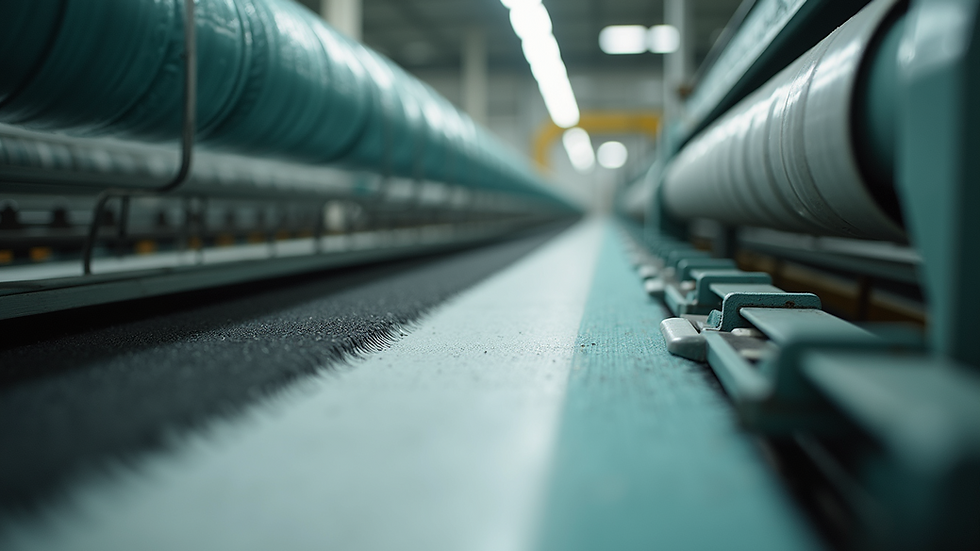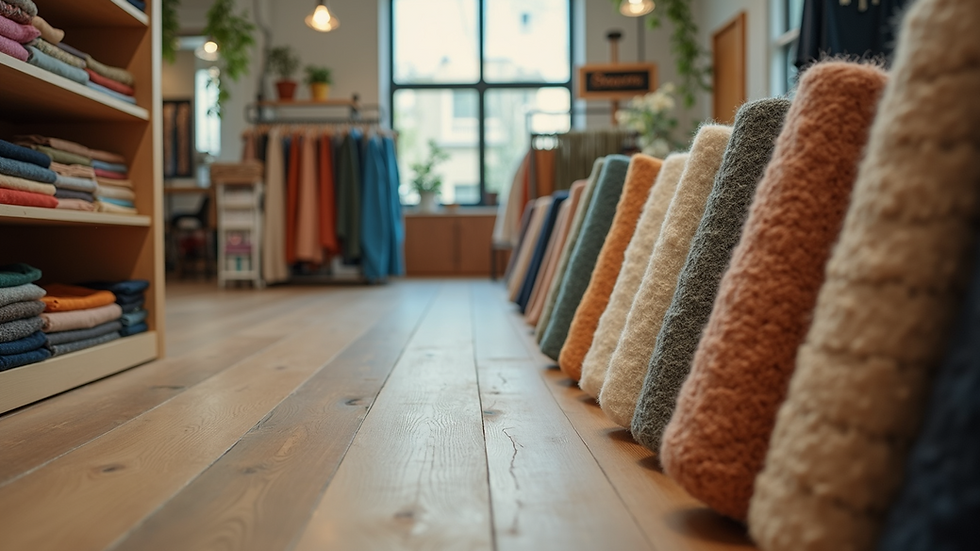Understanding the Importance of Sustainable Textile Solutions
- Metrotex Textile Rental Service | Uniforms and Linen

- Jun 4
- 4 min read
The world of textiles is evolving, with sustainability at the forefront of discussions. As consumers become more aware of their environmental impact, it is essential to understand sustainable textile solutions. These methods not only help the planet but also create opportunities for businesses to thrive. In this article, we will dive into what sustainable textiles are, their benefits, and how various industries can adopt them.
What Are Sustainable Textiles?
Sustainable textiles refer to fabrics that are produced, processed, and manufactured with minimal environmental impact. This involves using natural resources wisely, reducing waste, and ensuring fair labor practices. The goal is to create textiles that are eco-friendly and ethically produced.
Common examples include organic cotton, bamboo, and recycled polyester. These materials require less water and energy during production and decompose more easily than conventional textiles. Understanding the types of sustainable materials available is the first step in making informed choices for a greener future.

Benefits of Sustainable Textiles
Adopting sustainable textiles has several benefits for both the environment and the economy.
Environmental Impact
Using sustainable materials helps conserve water and reduce carbon emissions. For example, organic cotton uses 91% less water than conventional cotton. This is crucial in a world where water scarcity is becoming a significant issue.
Additionally, sustainable textiles minimize pollution. Conventional textile production often involves toxic chemicals that can harm waterways and ecosystems. By choosing sustainable alternatives, we can reduce harmful runoff and support a healthier planet.
Economic Advantages
Investing in sustainable textiles can also be economically beneficial. Consumers are increasingly seeking eco-friendly products, which means businesses can tap into a growing market. A report by Grand View Research projected the global sustainable fashion market to reach over $8.25 billion by 2023.
Social Responsibility
Sustainable textiles promote fair labor practices, ensuring that workers receive fair wages and safe working conditions. Many textile brands now make transparency a priority, allowing consumers to trace the origins of their clothing. This aligns with a growing demand for ethical consumption, making it possible for consumers to support brands that reflect their values.

How to Implement Sustainable Textile Solutions
Transitioning to sustainable textiles may seem overwhelming, but there are practical steps that individuals and businesses can take.
1. Choose Eco-Friendly Materials
Start by opting for eco-friendly fabrics. Look for certifications like Global Organic Textile Standard (GOTS) or OEKO-TEX, which ensure sustainable production practices. Products made from materials such as Tencel, hemp, and recycled fibers should be prioritized.
2. Reduce Waste through Upcycling
Upcycling is a creative way to give new life to old textiles. Instead of discarding worn clothes, consider transforming them into new items, such as tote bags or home décor. Implementing upcycling strategies helps reduce waste and encourages a culture of sustainability.
3. Rent Instead of Buy
Consider textile rental services. Renting clothing and textiles reduces the need for constant production, which in turn lowers carbon footprints. Such services often provide high-quality items that individuals can use for specific occasions without needing to buy them outright.
4. Support Sustainable Brands
Choose to buy from brands that prioritize sustainability. Brands like Patagonia and Eileen Fisher are leading the way, focusing on ethical production and transparency. Supporting these businesses contributes to a marketplace that values sustainability.
5. Educate Yourself and Others
Raise awareness about the importance of sustainable textiles in your community. Share articles, host workshops, or even start a small group interested in eco-friendly living. Education is a key factor in encouraging more sustainable practices.

Challenges in the Industry
While the shift to sustainable textiles is promising, there are still challenges to overcome.
High Initial Costs
Sustainable materials can often be more expensive than their conventional counterparts. Many businesses may hesitate to invest in sustainable options due to these higher upfront costs. However, it is essential to recognize the long-term savings from reduced energy and resource use.
Consumer Awareness
Despite the growing trend, many consumers are still unaware of sustainable textiles and their importance. Brands and advocates must work together to educate the public on the environmental impact of their choices.
Supply Chain Limitations
Currently, the sustainable textile industry is still developing. Many businesses struggle to find suppliers who can provide sustainable materials consistently and at scale. Strengthening the supply chain will be crucial in making sustainable textiles more accessible.
The Future of Sustainable Textiles
As we look to the future, the demand for sustainable textiles will only continue to grow. Consumers are becoming increasingly conscious of environmental issues, and this trend will shape the industry significantly.
Innovative Technologies
Advancements in technology hold potential for improving sustainable textile production. Innovations in fabric recycling, biotechnology, and alternative materials could change how textiles are made. For example, brands are exploring ways to produce textiles from agricultural waste, reducing the need for virgin materials.
Government and Corporate Initiatives
Governments and corporations are beginning to recognize the importance of sustainability. Policies promoting eco-friendly production practices and incentives for sustainable businesses are on the rise. Collaboration between industries and governments can spur significant changes.
Ultimately, the future of textiles lies in sustainable practices. By making informed decisions, brands and consumers can work together to reduce their environmental impact and support ethical production.
Take Action Today
The time to act is now. Every choice, whether big or small, counts in the quest for a sustainable future. Start by making informed decisions about textile purchases and supporting brands that prioritize ethical practices.
Consider joining forums or community groups that focus on sustainable living. Share your experiences, learn from others, and inspire those around you. The textile industry's future depends on collective action towards sustainability.
By embracing sustainable textiles, we can forge a sustainable future that not only benefits businesses but also conserves our environment for generations to come.





Comments